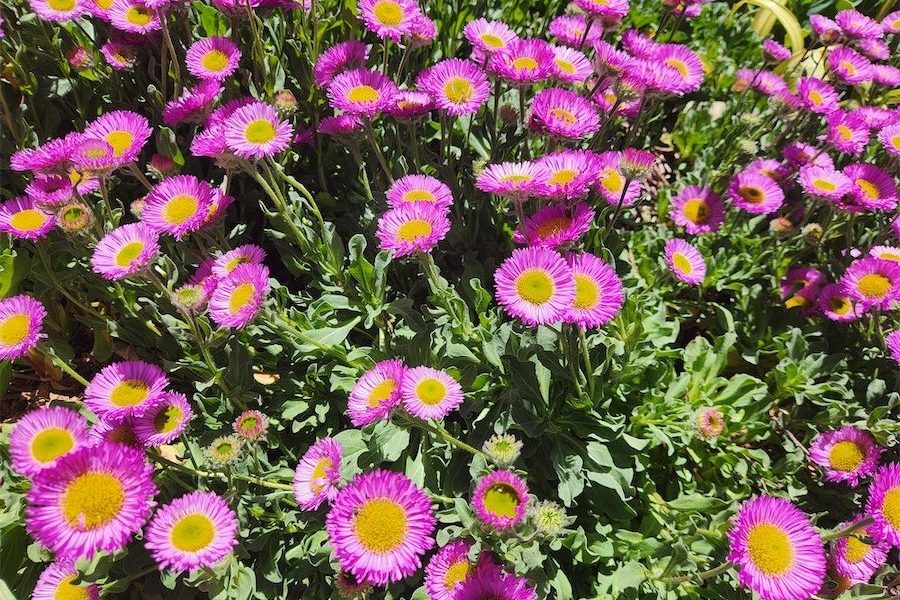 Seaside Fleabane… a low-growing perennial. Photo: Jackie Warburton
Seaside Fleabane… a low-growing perennial. Photo: Jackie Warburton
Gardening writer JACKIE WARBURTON hails the Seaside Fleabane as a “magnet” for bees and pollinators as well as attracting all the good insects in the garden.
A PLANT that’s putting on a show in the garden this summer – and new to me – is Seaside Fleabane (Erigeron glaucus).

This is a bright and cheery low-growing perennial, with bold pink flowers and yellow centres. From the Asteraceae family, it’s a “magnet” for bees and pollinators as well as attracting all the good insects in the garden.
A native to the coast of California, it grows just as well here. It is clump forming and does well as a low border or in the rock garden, where it is hot and dry.
It is a small plant that grows to only 30cm by 40cm. Once established, it needs little water or care and is terrific for pots and patios.
We are familiar with growing this family of plants in Canberra and I grow the seaside daisy (Erigeron Karvinskianus) as a small border plant surrounding my rose garden. It gets a really good chop, once a year in the middle of winter when the roses get their prune, too.
TRY to limit any large pruning of shrubs until autumn, once the summer heat is gone. Cuttings from plants whose stems of spring growth have hardened and gone brown can be taken now.
Classic plants to propagate this way include camelias, climbers, shrubs and trees and, in general, is the main propagation method for most evergreen plants.
Try this at home by snipping small twigs – 10cm-15cm long – with the base being hard and the tip being soft. Choose stems with short internode gaps.
Cut just before a node and dip into hormone gel or organic honey and gently pot into small pots. Keep them in dappled shade for the next few months, but don’t let the potting mix dry out.
Worm castings, from a worm farm, make a good potting mix or make your own with equal amounts of compost, core peat and sand.

IN the vegetable patch things should be going full swing with lots of produce. Watering of any flowering or fruiting plants pushes them into fast growth.
Now that the peak of summer has arrived, all of the Solanaceae flowering vegetables, such as tomatoes, eggplants and chillies, are doing their best.
Most, if not all, plants of this family need the hot sun to ripen properly and need daily watering to keep them growing fast.
All vegetables will benefit from a fertiliser high in potash and potassium to keep the yield sweet and delicious to eat. Make sure the fertilisers are low in nitrogen, as this will only encourage soft, non-flowering growth and attract insects such as white fly and aphids.
Chillies are from the capsicum family and are hotter in flavour to eat. The smaller the chilli, red or green, the hotter the flavour.
Jottings
- Order bulbs for autumn plantings such as Anemone and Ranunculus.
- Mulching keeps moisture in the soil.
- Transplant and sow brussels sprouts for autumn planting.
Who can be trusted?
In a world of spin and confusion, there’s never been a more important time to support independent journalism in Canberra.
If you trust our work online and want to enforce the power of independent voices, I invite you to make a small contribution.
Every dollar of support is invested back into our journalism to help keep citynews.com.au strong and free.
Thank you,
Ian Meikle, editor





Leave a Reply